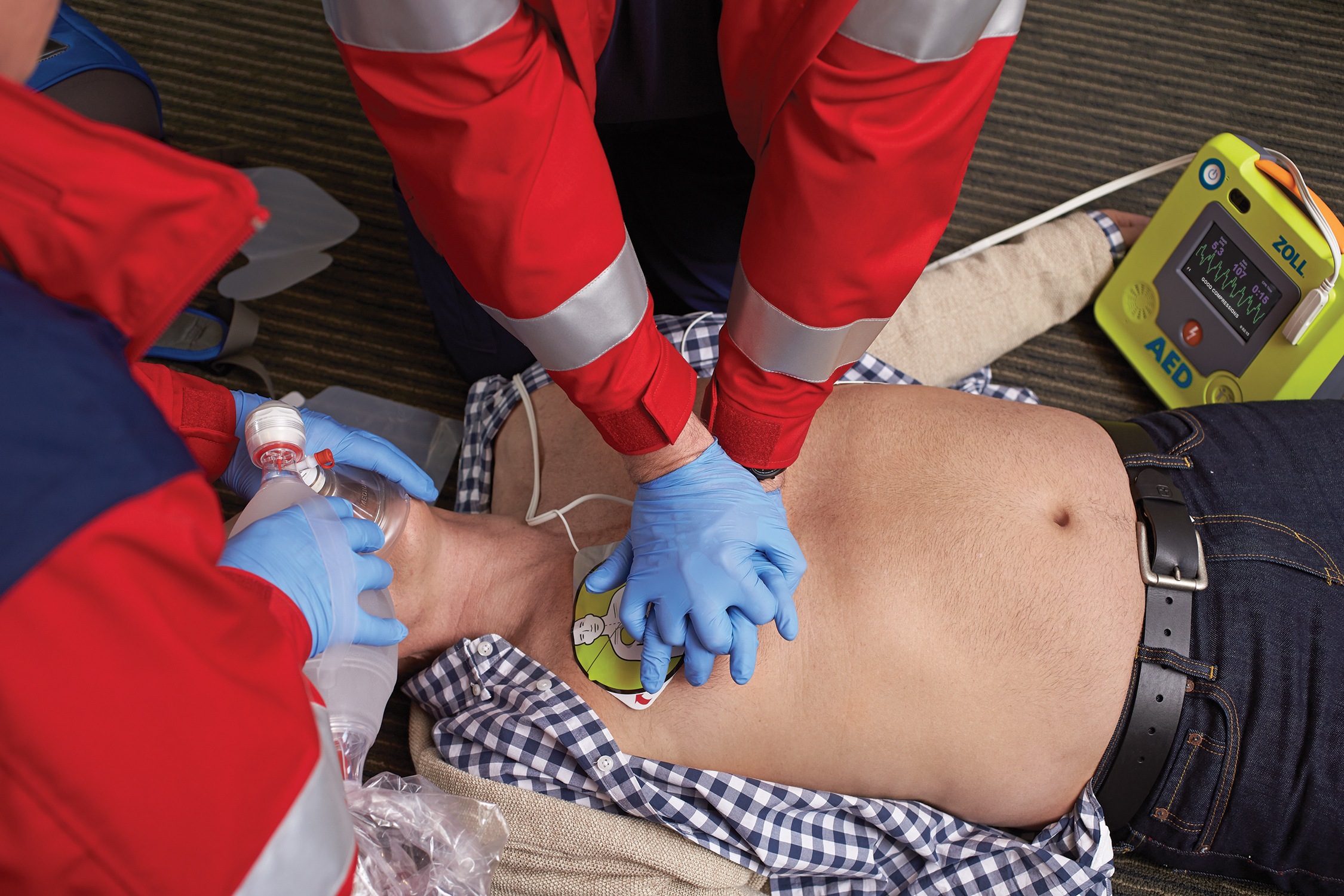
Defibrillator maintenance: AED and functional verification
The defibrillator is a life-saving device that performs a correct analysis on the patient to recognise the presence of any heart rhythms that should be defibrillated
The functional verification of a defibrillator: why it is essential
If it recognises probable arrhythmias, it will charge a capacitor, emitting an electrical discharge of the right energy which, passing through the patient’s heart, will momentarily interrupt cardiac activity so that it can be resumed correctly.
To verify that the defibrillator does all this correctly and adequately, it must undergo an annual technical check.
During the check, by means of a special device, the analyser, a cardiac arrest with different types of arrhythmia will be simulated, causing the defibrillator to deliver an actual discharge, and then accurately measuring the amount of energy delivered and the timing of delivery.
In Europe functional verification is compulsory, and must be performed annually on all defibrillators in the health service, emergency and no less important for out-of-hospital defibrillators, according to CEI 62-148, CEI 62-13 EN 60601-2-4 guidelines, under penalty of a fine and/or criminal sanctions.
Standard CEI 62353, with regard to periodic inspections and tests to be carried out after repair work on electro-medical equipment, states that the frequency of functional safety inspections must be established by the manufacturer and indicated in the user manual.
If not indicated in the defibrillator user manual, CEI EN 62353, in Annex F, indicates that for devices that generate and apply electrical energy to directly influence the activity of the heart, such as defibrillators, the interval between functional checks should never exceed 2 years.
The safety assessment of the defibrillator must be carried out by technicians specialised in electrical safety, who have had adequate training in the tests to which the defibrillator must be subjected.
All tests performed must also be documented.
The expiry date of the functional verification can be seen on the sticker on the right-hand side of the defibrillator, where the month and year of expiry can be viewed
All defibrillators must be maintained in an operational condition; the battery must have sufficient charge to ensure operation; batteries and adhesive pads must be replaced when due, which is generally two years for pads and five years for batteries.
AED owners may enter into agreements with health authorities or private entities for them to maintain the equipment, with the costs being borne by the owner.
For Italy and Europe: Official Gazette of the Italian Republic of 20/07/2013 converted into law Annex (E) Point 4.3 Maintenance and signage (Page 13/24): https://www.gazzettaufficiale.it/eli/gu/2013/07/20/169/sg/pdf
Point 4.3 Maintenance and signalling: AEDs must undergo functional checks, inspections and periodic maintenance in accordance with the deadlines set out in the user manual and in compliance with current regulations on electro-medical equipment.
DEFIBRILLATORI: VISITA LO STAND DI PROGETTI MEDICAL EQUIPMENT SOLUTIONS IN EMERGENCY EXPO
Read Also
Emergency Live Even More…Live: Download The New Free App Of Your Newspaper For IOS And Android
Defibrillator Maintenance: What To Do To Comply
Defibrillators: What Is The Right Position For AED Pads?
When To Use The Defibrillator? Let’s Discover The Shockable Rhythms
Who Can Use The Defibrillator? Some Information For Citizens
Diseases Of The Valves Of The Heart: Aortic Stenosis
What Is The Difference Between Pacemaker And Subcutaneous Defibrillator?
What Is An Implantable Defibrillator (ICD)?
What Is A Cardioverter? Implantable Defibrillator Overview
Paediatric Pacemaker: Functions And Peculiarities
Cardiac Arrest: Why Is Airway Management Important During CPR?
RSV (Respiratory Syncytial Virus) Surge Serves As Reminder For Proper Airway Management In Children
Supplemental Oxygen: Cylinders And Ventilation Supports In The USA
Heart Disease: What Is Cardiomyopathy?
Inflammations Of The Heart: Myocarditis, Infective Endocarditis And Pericarditis
Heart Murmurs: What It Is And When To Be Concerned
Broken Heart Syndrome Is On The Rise: We Know Takotsubo Cardiomyopathy
Cardiomyopathies: What They Are And What Are The Treatments
Alcoholic And Arrhythmogenic Right Ventricular Cardiomyopathy
Difference Between Spontaneous, Electrical And Pharmacological Cardioversion
What Is Takotsubo Cardiomyopathy (Broken Heart Syndrome)?
Dilated Cardiomyopathy: What It Is, What Causes It And How It Is Treated
Heart Pacemaker: How Does It Work?
Italy, ‘Good Samaritan Law’ Approved: ‘Non-Punishability’ For Anyone Using A Defibrillator AED
Oxygen Damaging For Heart Attack Patients, Study Says
European Resuscitation Council (ERC), The 2021 Guidelines: BLS – Basic Life Support
Paediatric Implantable Cardioverter Defibrillator (ICD): What Differences And Peculiarities?


